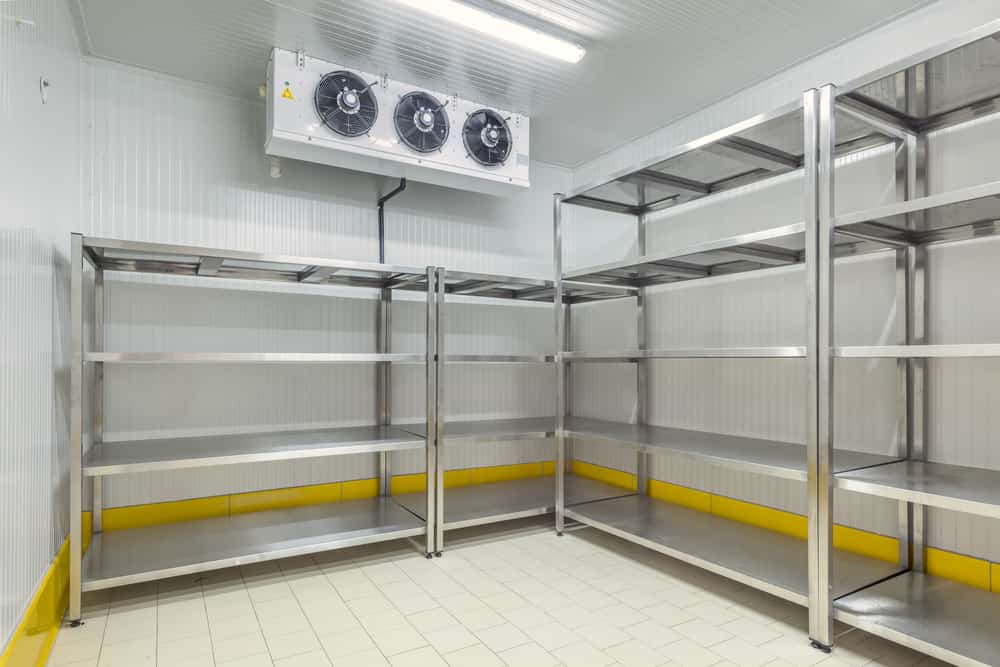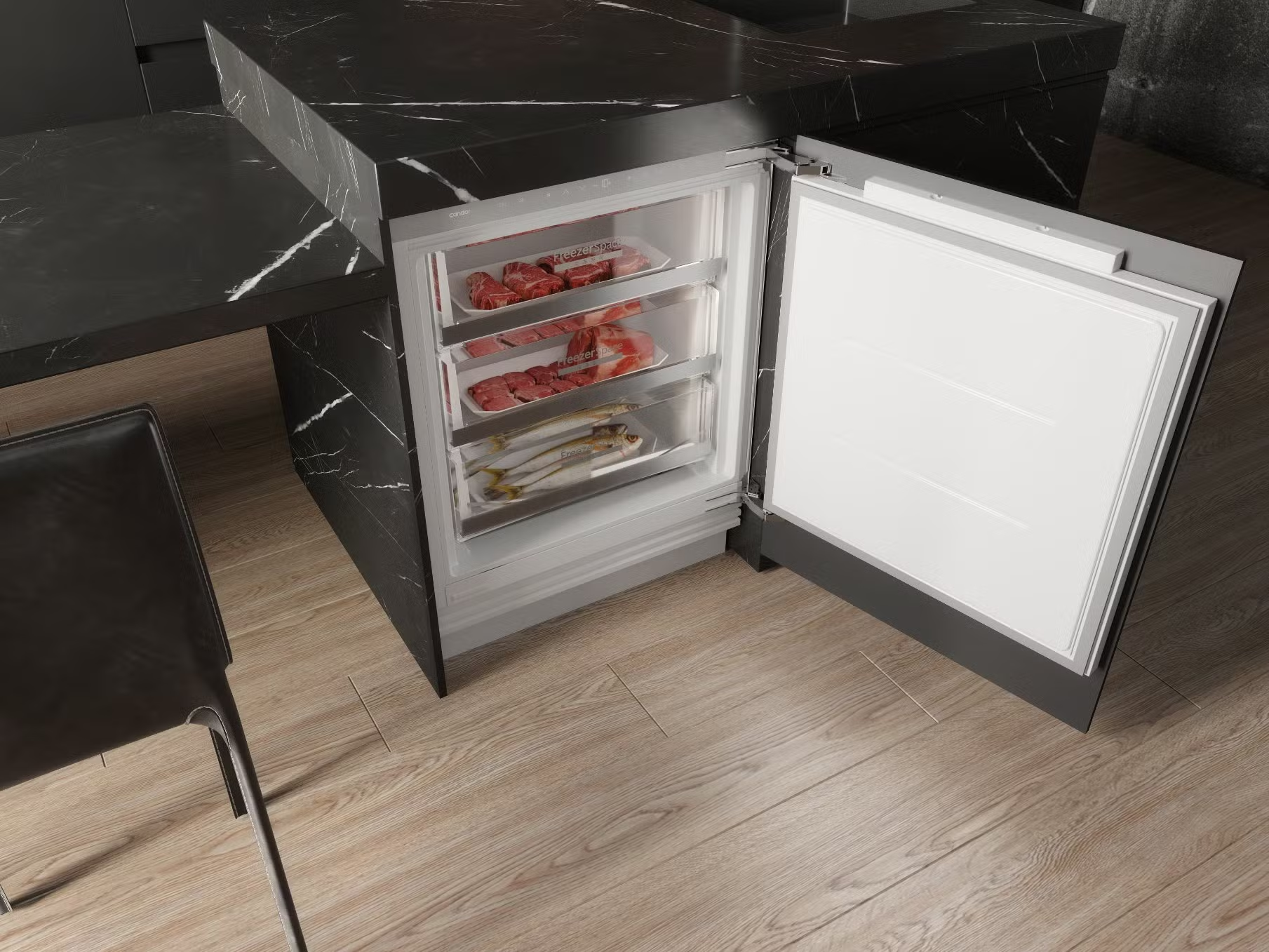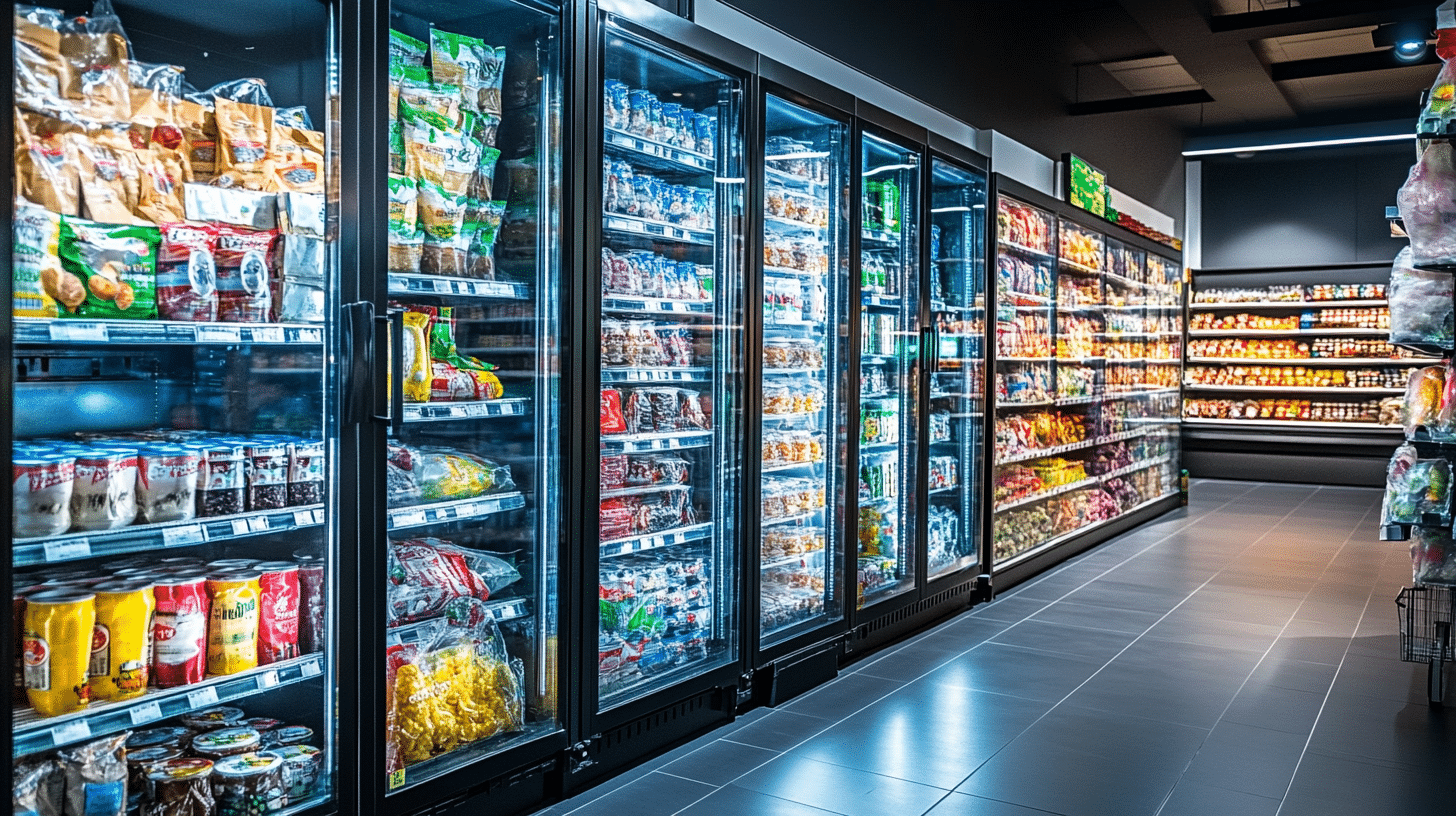In the realm of industrial refrigeration, choosing the right type of system for your commercial business is essential for maintaining proper temperature control, ensuring food safety, and optimizing operational efficiency.
Whether you run a restaurant, grocery store, or warehouse, understanding the various types of commercial refrigeration systems can help you select the ideal unit that aligns with your space, needs, and budget. This guide explores different refrigeration systems, including under-counter refrigerators, display coolers, and walk-in freezers, and highlights the ideal applications for each.
Under-Counter Refrigerators: Compact and Convenient
Under-counter refrigerators are widely used in kitchens, bars, and small retail spaces. These units are designed to fit beneath counters, saving valuable floor space while providing easy access to chilled items.
Due to their compact size, they are best suited for businesses with limited space, such as cafes, restaurants, or bars that need quick access to ingredients or beverages without overwhelming the area.
These refrigerators typically have a modest capacity but can be equipped with shelves or drawers to enhance organization. They are ideal for storing items that require frequent access, like prepped ingredients in a busy kitchen or drinks in a bar area. The under-counter fridge is efficient and reliable, making it a staple in high-turnover commercial kitchens and small eateries.
Display Coolers: Perfect for Visibility and Accessibility
Display coolers are often seen in grocery stores, convenience stores, and retail environments where products need to be both stored and displayed for customers. These refrigeration units come with transparent doors or open shelving, allowing customers to easily view and select items. For businesses that rely on consumer impulse purchases, display coolers are a must-have.
These systems are designed to keep products cool while also showcasing them. Depending on the design, they can accommodate beverages, snacks, or packaged foods. The ideal use for display coolers is in environments where visibility plays a significant role in sales, and they are most commonly used for soft drinks, dairy products, and packaged ready-to-eat meals.
Walk-In Freezers: Large-Scale Storage Solutions

Walk-in freezers offer large-scale storage for businesses that need to store large quantities of frozen goods. These are commonly used in foodservice industries, such as restaurants, food processing plants, and warehouses. With their sizable interior, walk-in freezers provide ample space for bulk food storage, meat preservation, and seasonal stockpiling.
They can be customized with shelving units and organization tools to maximize efficiency. Given their size, walk-in freezers are ideal for high-volume operations where large quantities of frozen food need to be easily accessible. If your business requires long-term storage for frozen goods, this type of refrigeration system will ensure that products remain at optimal temperatures.
Reach-In Refrigerators: Versatile and Easy-to-Access
Reach-in refrigerators are commonly found in foodservice establishments, grocery stores, and other retail businesses. These units come in a variety of sizes and configurations, from one-door to multi-door designs, offering easy access to a wide range of perishable items. Their versatility makes them suitable for kitchens, service counters, or food prep areas, providing ample space to store ingredients or ready-to-serve dishes.
These refrigerators can be used for a variety of purposes, such as storing vegetables, dairy products, or meats. Their upright design ensures that space is utilized efficiently while allowing employees to quickly access items without bending over or crouching down.
Undercounter Freezers: A Practical Solution for Smaller Spaces

Undercounter freezers are similar to under-counter refrigerators but are designed to store frozen items instead of chilled goods. These freezers are compact and ideal for kitchens with limited space or establishments that need additional storage capacity for frozen foods.
Often found in smaller restaurants or bars, undercounter freezers are used for storing frozen ingredients like ice cream, frozen meats, or frozen vegetables. They are designed to be both functional and space-efficient, allowing businesses to maximize their storage capacity without taking up unnecessary floor space.
Glass-Door Refrigerators: Combining Functionality with Style
Glass-door refrigerators are another popular choice for retail and commercial spaces, especially for businesses that aim to display their refrigerated goods while keeping them at optimal temperatures. These units feature transparent glass doors, which allow customers to easily view products while keeping the temperature stable inside.
These refrigerators are commonly used in convenience stores, supermarkets, or even hotels where chilled drinks, snacks, and packaged meals are sold. Glass-door units provide both functionality and visual appeal, encouraging customers to engage with the products and make purchasing decisions based on what they can see.
Blast Freezers: Ideal for Quick Cooling
For businesses that need to rapidly freeze food items or preserve perishable goods, blast freezers are an essential tool. These units are designed to quickly lower the temperature of food, ensuring that items are frozen evenly and safely, without compromising quality or texture. Blast freezers are most commonly used in commercial kitchens, food manufacturing, and catering businesses.
They are perfect for large batches of food that need to be frozen in a short amount of time, such as meats, fish, or baked goods. Rapid freezing prevents the formation of large ice crystals, which can damage the integrity of the food, maintaining both flavor and texture.
Matching Refrigeration to Your Needs
Selecting the appropriate commercial refrigeration system requires careful consideration of your business’s needs, available space, and the specific products you need to store. Whether you need compact under-counter refrigerators, larger walk-in freezers, or display coolers to entice customers, there is a refrigeration solution that suits your business.
By understanding the differences between these systems and their ideal applications, you can make a more informed choice that optimizes both functionality and space utilization, ensuring your products remain fresh and safe for customers.

